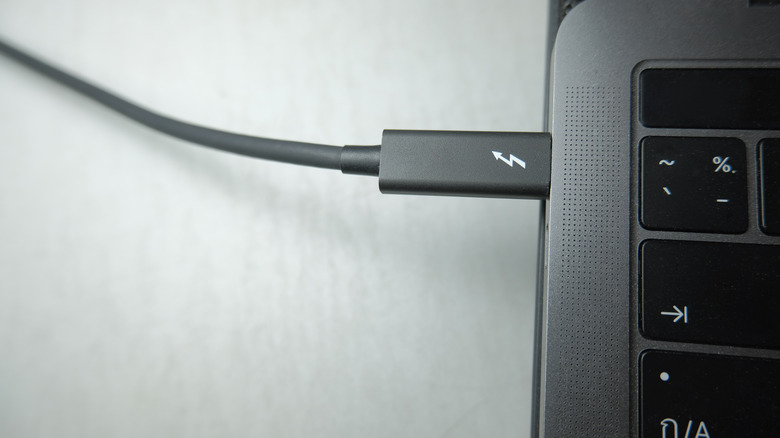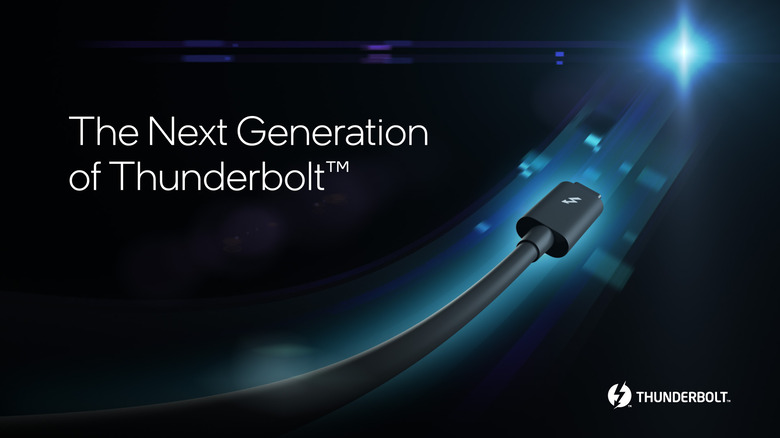Intel's Next-Gen Thunderbolt Prototype Promises Twice The Bandwidth, DisplayPort 2.1 Support
Intel has demoed the capabilities of its next generation of Thunderbolt cables. The company promises the new cables, which haven't received a release date yet, will offer "up to three times the capability of Thunderbolt™ 4" while taking both the creative side of things and gaming to new levels. Thunderbolt 3, a version of the cable you can currently go out and buy, offers 40-gigabit speeds — double what you can get from a USB type C cable. However, to get those speeds the cable does have to be plugged into a Thunderbolt port, which not all devices come with. Older versions of the cable connect through a Mini DisplayPort instead of a USB-type connection, but that changed when USB-C was launched.
Thunderbolt, which was jointly developed by Intel and Apple, is an option on both PCs and Macs. Intel claims the Thunderbolt protocol specification it submitted to the USB Promoter Group three years ago formed the basis of USB4, and that it has spent the last few years working on improving the standard. The company also doesn't hold a monopoly on manufacturing the cables, offering the name and logo royalty-free to any business that is involved in its certification program. So when the new cable hits the shelves, you won't be stuck buying one that was made by Intel directly, nor will you have to fork out half your net worth for the Apple version.
New cable, increased capabilities
The new cable offers a quick 80 gigabits per second of "bi-directional bandwidth," allowing fast file transfers from either side. That's double the bandwidth of Lightning 4, the current generation of lightning cable. Video and display speeds are also improved, clocking in at a staggering 120 gigabits per second. The cables are based on the new USB4 Version 2.0 and DisplayPort 2.1 specifications. So if you haven't got a brand-new, higher-end device with one of the new ports on it, you're unlikely to feel the full benefits of a newer Thunderbolt cable just yet. There's also the option of upgrading or just adding an extra port if you're a desktop user and don't mind getting your hands dirty.
In a statement announcing the release of the cable, Intel's general manager of the Client Connectivity Division Jason Ziller said: "Intel has always been the industry pioneer and leader for wired connectivity solutions, and Thunderbolt is now the mainstream port on mobile PCs and integrated into three generations of Intel mobile CPUs. We're very excited to lead the industry forward with the next generation of Thunderbolt built on the USB4 v2 specification, advanced to this next generation by Intel and other USB Promoter Group members."
Intel says the new cables are also backward compatible. While you may not get the speeds the cable is truly capable of, it will act like an earlier generation of Thunderbolt cable or even a USB type C cable if you plug it into an older or less powerful port. More details on the cable's features, a firm release date, and the cable's official name are set to be confirmed next year.

